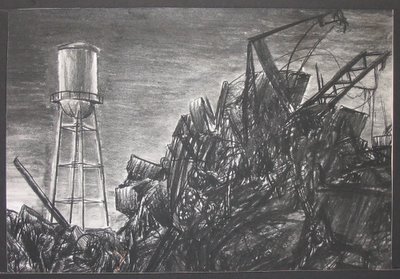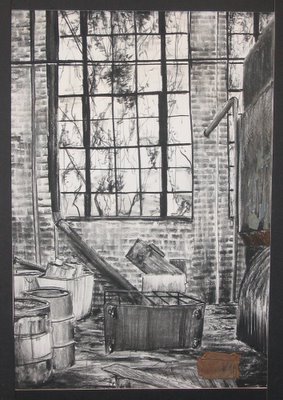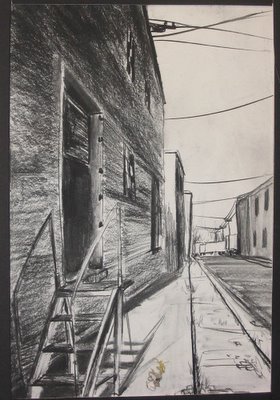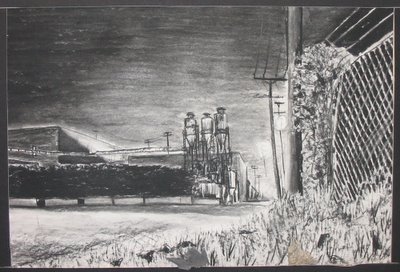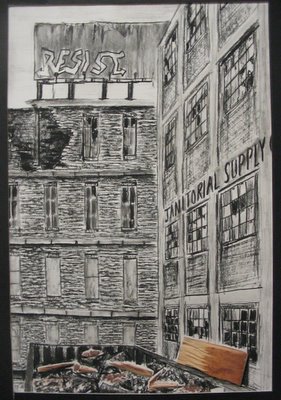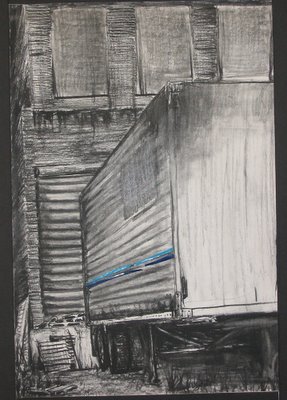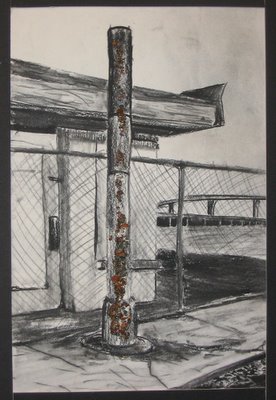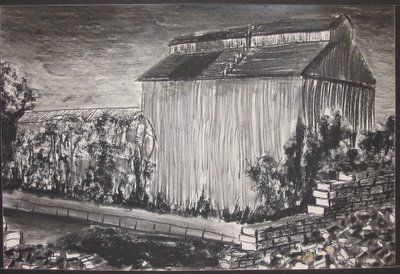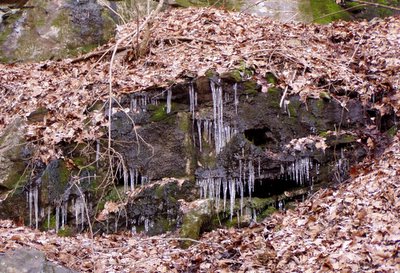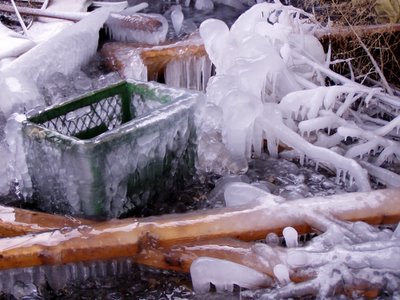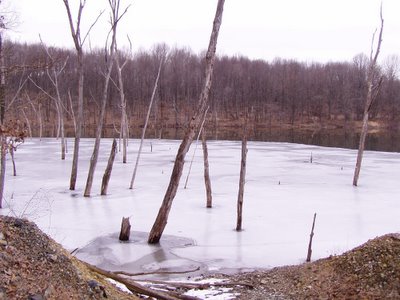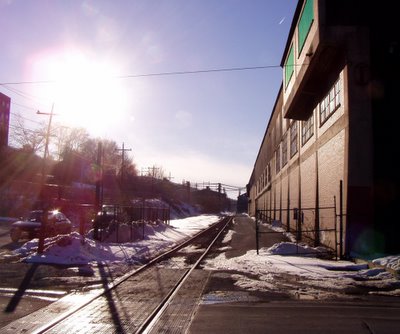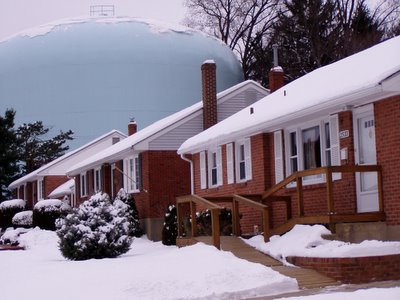Material Drawings III

I have to a say that in this drawing I feel like I caputed the mood of the scene, even though it is from a photo. The light polluted sky, the large, empty lot, the beaten dumpster, the patchwork all over, along with lighting, seems to create the haphazard destruction, absurdity, uneasiness, and curiousity I felt and saw when there. This is simply another warehouse being gutted, with a rag I found in the foreground.
This is from the same site as the top-most photo, though from the rear of the property, and at night. I did a quick sketch of this composition, more like an outline, and redrew it later into this heaping pile of concrete, brick, metal, trussing, grating, wood, plastic, and stone. Apparantly, a building used to be here! This pile made some interesting sounds, with all its wavering metal for the wind. When the luxury housing comes, this water tower, along with a isolated, tall smokestack to the right, will likely be retained for advertisement and for "history." No one in the luxury housing will likely ever even know what the building their living in used to do, nor what its closure means to thousands jobless and billions worldwide suffering the consequences of global capitols pillaging, instead, they'll see an imposing, but castrated smokestack, and think "there used to be a factory here, how odd", whilst moving on aimlessy through an unfilling life threatened with the ever-increasing tide of instability.
This is a small, nearly square building that houses what I beleive was a boiler for electrical generation, though as usual, nothings really conclusively showing that. The inside has the normal appearance of an abandoned building: as if a tornado had just hit it, but left the strucure unscathed. Regardless of how sad, scary, depressing, and repulsive this place was, with its astonighing disorders, remants of homelessness in the form of liquor, porno, and wearied clothing, it provided an excellent source of materials. The cardboard of one soldiers face was made from the flaps of several boxes, stained in different shades; the rust poles of the barren shacks were made from the rust I got from here, and the folding, whirling draperies of other shacks were from the paint chips I scraped off one of the boilers.

